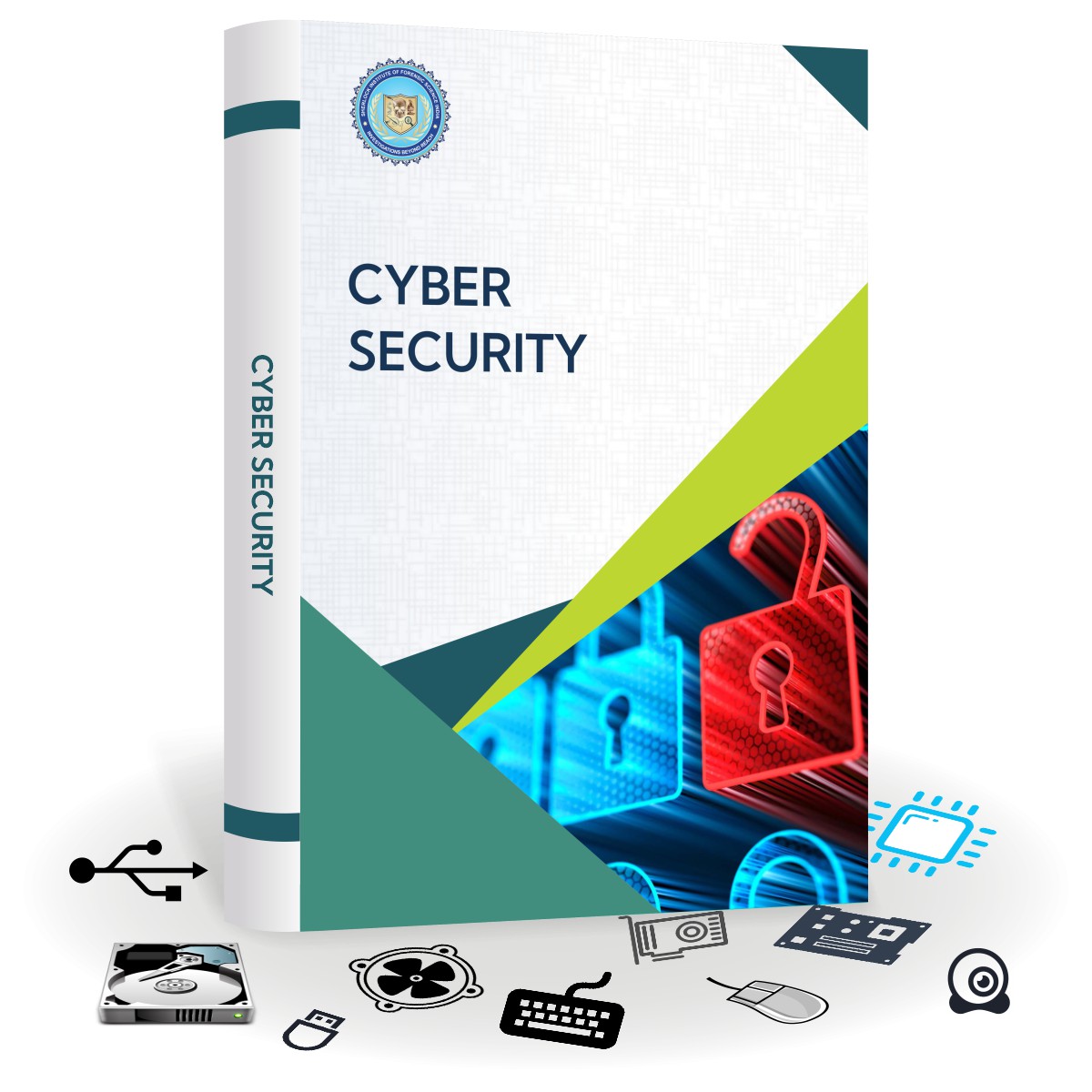MODULE 1. INTRODUCTION TO CYBERSECURITY AND THE MODERN THREAT LANDSCAPE
In this module, you will learn how cybersecurity has evolved in response to the shifting digital threat landscape. You will understand different types of modern digital threats, the motivations of attackers behind modern cyberattacks, and key insights from real-world security breaches. You will also gain clarity on core security pillars and essential terminology, helping you build a strong foundation for deeper cybersecurity concepts ahead.
MODULE 2. OPERATING SYSTEMS ARCHITECTURE AND SECURITY CONCEPTS
This module explores the functioning of operating systems, including kernel and OS architecture, memory management, processes, threading, and filesystem internals. Additionally, you will also gain understanding of how system calls work, security boundaries are built within OS design, and default OS misconfigurations create vulnerabilities. The module concludes with the fundamentals of system logging, enabling you to learn how to recognize early signs of misuse or compromise.
MODULE 3. NETWORKING FUNDAMENTALS AND SECURE NETWORK DESIGN
This module covers the essential concepts of networking, including how communication models work, structuring of data packets, and how routing processes can expose systems to attacks. You will also learn about secure network design principles such as firewall patterns, VLAN (Virtual Local Area Network) segmentation, and the basic functions of IDS (Intrusion Detection System) & IPS (Intrusion Prevention System). Finally, you will gain insights about key network monitoring points, which will help you to identify and mitigate threats effectively.
MODULE 4. SECURITY MINDSET AND ADVERSARIAL THINKING FRAMEWORKS
In this module, you will learn how to think like attackers and defenders by developing a strong security mindset, identifying weak assumptions in systems, finding exposed or overlooked pathways that attackers might exploit, and assessing risks based on real-world impact rather than theoretical severity. This module will help you in building practical decision-making skills essential for proactive and resilient cybersecurity planning.
MODULE 5. LINUX ESSENTIALS FOR CYBERSECURITY AND ETHICAL HACKING
This module covers the essential Linux skills required for cybersecurity and ethical hacking, including how to navigate the shell environment, interpret system configurations, and interact with services and INIT (Initialization) systems. You will also explore log and journal management, file permission structures, and user/group hierarchies. These fundamental concepts will equip you with the skills needed for system behavior, detect anomalies, and perform secure, command-line–based operations effectively.
MODULE 6. ETHICAL HACKING PRINCIPLES, METHODOLOGY, AND LEGAL BOUNDARIES
In this module, you will learn about the core principles and structured methodology of ethical hacking, including each phase of a professional security assessment, how to define rules of engagement, follow responsible disclosure workflows, and build clear scopes. The module also introduces you to key legal considerations and precedents, along with effective ways to communicate risks to stakeholders while maintaining ethical and lawful boundaries.
MODULE 7. INFORMATION GATHERING AND RECONNAISSANCE TECHNIQUES
This module covers ethical reconnaissance techniques to gather actionable information. You will also learn about search engine intelligence, infrastructure footprinting, and profiling methods for emails and employees. You will gain clarity on DNS (Domain Name System) and WHOIS investigations, ways to extract metadata, and study infrastructure behavior patterns. These skills will help you in identifying potential attacks early and how attackers collect information before launching an attack.
MODULE 8. VULNERABILITY ASSESSMENT AND TARGET PROFILING
In this module, you will learn how to perform effective vulnerability assessments and build detailed target profiles. You will understand service enumeration techniques, version detection, and fingerprinting logic. You will also learn to interpret automated scan results, validate findings manually, and prioritize weaknesses based on exploitability and real-world impact. This module strengthens your ability to identify, analyze, and rank security flaws accurately.
MODULE 9. WEB APPLICATION SECURITY FOUNDATIONS
In this module, you will learn the foundational concepts of web application security, including how HTTP works, how requests flow, and how state is maintained through cookies and sessions. You will explore authentication mechanisms, common error-handling logic flaws, and the concept of server-side and client-side boundaries. This module equips you to recognize core weaknesses in modern web applications and understand how attackers exploit them.
MODULE 10. WEB APPLICATION ATTACK TECHNIQUES AND EXPLOITATION MODELS
This module covers how attackers exploit weaknesses in web applications through a variety of advanced techniques. You will study parameter tampering, authentication bypass, malicious file uploads, and business logic abuses. The module also explores IDOR (Insecure Direct Object Reference) issues and access control flaws, API backend weaknesses, caching flaws, SSRF (Server-Side Request Forgery) patterns, and how chained exploits are crafted. You will gain practical insights into identifying and understanding real-world web exploitation models.
MODULE 11. SYSTEM-LEVEL EXPLOITATION AND PRIVILEGE ESCALATION
In this module, you will learn how attackers escalate privileges and compromise systems by identifying weak internal configurations, how to perform local enumeration to uncover attack paths, how to analyze misconfigured services, and how to study kernel-level escalation patterns. The module also covers credential artifacts, password reuse risks, SUID (Set User ID) and capability abuses, and living-off-the-land techniques. You will gain practical skills to detect, prevent, and mitigate system-level exploitation.
MODULE 12. NETWORK PENETRATION TESTING AND LATERAL MOVEMENT TECHNIQUES
This module explores how attackers infiltrate networks, move laterally, and exploit internal systems. You will learn to analyze protocol misbehavior, perform credential replay, and practice pivoting techniques to access deeper network segments. The module also covers traffic hijacking, remote service abuse, SMB (Server Message Block) and RDP (Remote Desktop Protocol) exploitation, and internal service discovery. You will gain practical skills to understand, detect, and defend against real-world lateral movement strategies.
MODULE 13. PASSWORD SECURITY, AUTHENTICATION ANALYSIS, AND ACCESS CONTROL TESTING
In this module, you will learn how to evaluate the strength of authentication systems and identify weaknesses in access control. You will explore password cracking techniques, analyze MFA (Multi-Factor Authentication) misconfigurations, and understand how session fixation attacks occur. The module also teaches you to identify weak organizational security policies, enabling you to assess authentication risks and recommend stronger, more resilient access control measures.
MODULE 14. WIRELESS NETWORK SECURITY AND WIRELESS ATTACK TECHNIQUES
This module covers how wireless networks operate and where their security weaknesses commonly appear. You will explore wireless encryption models, identify risks posed by rogue access points, study WPA (Wi-Fi Protected Access) attack techniques, and study DE authentication abuse. The module also introduces vulnerabilities in Bluetooth, NFC, and other near-field technologies, helping you understand how attackers compromise wireless environments and how to defend against these threats effectively.
MODULE 15. REVERSE ENGINEERING FUNDAMENTALS AND MALWARE BEHAVIOUR ANALYSIS
In this module, you will learn the foundational skills required to reverse engineer software and analyze malware behavior. You will understand binary structure, assembly flow, static code dissection, and key techniques in dynamic instrumentation. The module also covers malware execution stages, packing and obfuscation methods, and common behavioral indicators. You will gain the ability to dissect malicious programs and identify how threats operate at a technical level.
MODULE 16. WINDOWS SECURITY ARCHITECTURE, ACTIVE DIRECTORY, AND DOMAIN ATTACKS
This module explores how Windows security architecture and Active Directory operate, along with the common weaknesses attackers target. You will learn about Windows authentication logic, AD schema behavior, how tokens and credentials are stored, domain misconfigurations, Kerberos abuses, GPO weaknesses, and persistence techniques. This module will help you gain a deep understanding of defending and assessing Windows enterprise environments.
MODULE 17. LINUX HARDENING, SERVICE SECURITY, AND EXPLOITATION PREVENTION
In this module, you will learn how to strengthen Linux systems against attacks through targeted hardening and monitoring techniques. You will explore SSH hardening practices, apply mandatory access controls, and follow service hardening checklists to minimize exposure. The module also covers log auditing and file integrity monitoring, equipping you with skills to detect anomalies early and maintain a secure, well-monitored Linux environment.
MODULE 18. MOBILE APPLICATION SECURITY ASSESSMENT AND RUNTIME ANALYSIS
In this module, you will learn how to assess mobile applications for security weaknesses using both static and dynamic techniques. You will understand app architecture, perform static APK analysis, and identify insecure local data storage practices. The module also covers intercepting mobile traffic, runtime patching, mobile authentication flaws, and vulnerabilities in hybrid apps. You will gain practical skills to evaluate and secure modern mobile applications effectively.
MODULE 19. CLOUD SECURITY FUNDAMENTALS WITH OFFENSIVE AND DEFENSIVE PERSPECTIVES
This module covers fundamentals of cloud security from both attacker and defender viewpoints. You will learn about cloud identity structures, common storage misconfigurations, and how workloads and serverless components can be exploited. The module also teaches you cross-account pivoting techniques and resource policy errors, helping you acquire a solid understanding of securing cloud environments and identifying risks unique to cloud ecosystems.
MODULE 20. MONITORING, LOGGING, AND SECURITY EVENT ANALYSIS
In this module, you will learn how to build effective monitoring and logging strategies to detect security incidents early. You will explore how to set behavioral baselines, design efficient log pipelines, and correlate suspicious activity across systems. The module also covers alert tuning and noise reduction techniques, enabling you to distinguish real threats from routine events and strengthen overall security visibility.
MODULE 21. DIGITAL FORENSICS FOR SECURITY PROFESSIONALS
This module teaches you the basic principles of digital forensics, focusing on security professionals. You will learn proper evidence handling, analyze filesystem artifacts, and perform memory captures to uncover volatile data. The module also introduces network forensics, timeline reconstruction, and industry-standard reporting practices, thereby equipping you with the practical skills to investigate incidents methodically while preserving the integrity and admissibility of digital evidence.
MODULE 22. INCIDENT RESPONSE PROCEDURES AND THREAT CONTAINMENT STRATEGIES
In this module, you will learn how to manage security incidents effectively from detection to recovery. You will study containment workflows, isolation strategies, and structured recovery phases that minimize damage. The module also emphasizes the significance of clear communication during incidents and thorough documentation of all actions taken. You will gain the skills needed to respond confidently, reduce impact, and restore normal operations after a cyber incident.
MODULE 23. SOCIAL ENGINEERING TECHNIQUES AND HUMAN SECURITY EVALUATION
This module covers how social engineering attacks exploit human behavior and how to evaluate an organization’s human security posture. You will gain insights about phishing frameworks, voice and SMS manipulation techniques, and the basics of physical intrusion. The module also explores user resistance training and psychological trigger mapping, enabling you to understand, detect, and mitigate people-focused attack strategies effectively.
MODULE 24. PROFESSIONAL SECURITY REPORTING, DOCUMENTATION, AND EVIDENCE PRESENTATION
In this module, you will learn how to create clear, professional security reports that effectively communicate technical findings. You will practice structuring results logically, explaining complex technical risks in plain language, and formatting evidence for accuracy and credibility. The module also covers writing executive-level summaries and outlining long-term remediation plans so that you can deliver reports that support informed decision-making and actionable security improvements.




